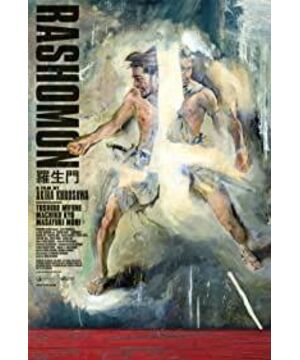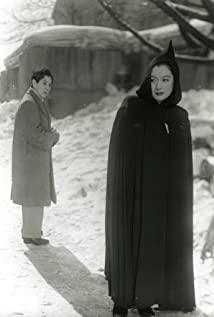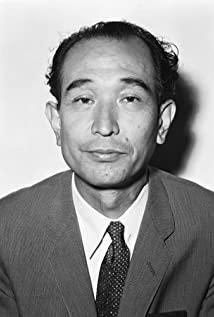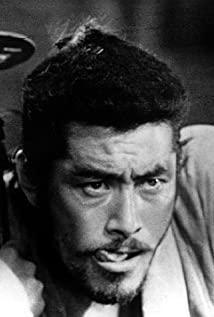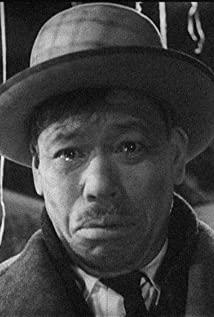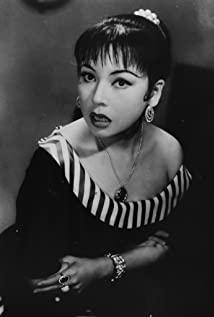The film "Rashomon" was adapted by the famous playwright Hashimoto Shinobu based on the 1921 short story "Shintake" created by the famous writer Akutagawa Ryunosuke. It is a stunning work by the great director Akira Kurosawa. Known as one of the "10 Most Valuable Movies in History", it is still dazzling after half a century.
I personally think that the reason why "Rashomon" has such a big impact depends on its profound movie theme on the one hand. With a case as the background, the film describes the ugly side of human nature and reveals the untrustworthiness and unknowability of human beings. However, the humanized transition at the end has transformed the original despair of the entire world and doubts about objective truth. , Changed to finally emphasize the credibility of people, praise the victory of humanitarianism and the revival of morality. Of course, on the other hand, because of its different shooting methods, the four people and their own monologues strung the main line of the whole story. The method is innovative and unique and intriguing.
In addition to the profound themes of this movie we just mentioned, what I want to talk about should be the different shooting techniques of Rashomon.
In fact, how a movie can give people the greatest imagination in a limited space, this may be a problem that many directors are more concerned about. "Rashomon" provides such a possibility.
Shooting method 1: Shooting messy scenery, reflecting the symbolic meaning.
Looking at the whole film, we can see that the movie is full of various symbols:
broken city gates, mysterious and terrifying woods, continuous heavy rain, and wandering things. Murder, thieves, woodcutters, warriors, monks, and these symbols are connected together to form a large divergent net. There is no affirmative content in this net. More vividly, no fish in the net is complete. , Or that none of them are sure to exist. The broken Rashomon wandered firmly in the lens, and everything that happened in such a powerful and contradictory scene would inevitably leave people unpredictable.
Shooting method 2: The same incident, different scenes reappear
The film uses the confession of five people in the public hall and the chattering in the rain shelter of walking monks, wood sellers, and miscellaneous children, showing the different conclusions that these people have made on the incident of the samurai being killed:
Robbers are more than xiang Maru said, he didn't kill the samurai, but the samurai lost in a duel with him and was chopped down. He died half-failed. What's the matter with him? At the same time, he boasted that the samurai's martial arts is strong, so as to set off his superior martial arts.
The dead samurai Takehiro said through the witch's mouth that he committed suicide with his wife's dagger. When he was dying, the short knife stuck in his chest was taken away by someone.
The samurai's wife Maisa said that when she threw a short knife into her husband's arms, her husband was accidentally injured and died.
The wood seller said that Masha provoked her husband to a duel with Doyomaru and was hacked to death by Doyomaru, but the martial arts of the two were ordinary and they were by no means like the prosperous Tayomaru. This concealed the fact that he drew the sword from the samurai's chest.
As for the capture of Duoxiang Maru, his own statement is also inconsistent with what arrested Kuai said. The arrest said that Duoxiang Maru fell from a horse and was captured and brought to justice by him. But Duoxiangwan said that he drank the spring water from a poisonous snake, and was arrested and caught quickly after being poisoned.
Moreover, when several people narrate their own experiences, they are all in the same place, with the same background and environment. This gives the audience a sense of presence and expectation, and they are eager to know what the truth is.
In fact, through the different opinions of several people, the original scene was reproduced again. This shooting technique was seen in later "Heroes" and "Lola Run". To a certain extent, with this shooting technique, I personally think that it will give the audience a wider scope for imagination and thinking.
Shooting method three: simple framing, dense shots
The play of "Rashomon" is only concentrated in four places: Rashomon, mountains and forests, pickets, and river beaches. But the main scene is in the mountains and forests. Among the 417 shots, the forest alone accounted for 293, accounting for nearly three-quarters of all shots. In particular, the high-speed following shot of the bandit Dayangmaru running in the bushes is the most exciting part of the show. I will list one or two here.
The first place: Robber Tasomaru chasing the samurai couple
The second place: Robber Tayang Maru pulls Masaru to the place of the samurai (the lens mainly focuses on the movement of the subject's feet, and the shooting of the light is also in place)
The most distinctive feature of the shooting of these scenes is that it makes the audience feel There is no camera, but the eyes of the audience follow.
There are 53 scenes in "Rashomon", and these 53 scenes share 417 shots. With so many lenses, the grouping weight is extremely meticulous and dense. Some are soothing and some are just passing by. With so many shots, the grouping is extremely detailed and dense. Some are soothing and effective, some are just a flash, which makes the whole play bright and neat, the plot is tight, the length is compact, the characters' movements are swift, and the whole play is perfectly constructed.
In fact, after watching this movie, I feel that Rashomon is not a purely narrative movie. Not only because of the multiple narration of an event in the narrative technique, but also because of the thoughtfulness of the story itself. There is a taste of philosophical speculation. Through the use of a lot of symbols and very little dialogue, it shows the evil of people in extreme environments, giving this movie a strong poetic quality.
We thank the master Akira Kurosawa for bringing us the classic Rashomon. We also believe that the film industry can develop better and better in the near future.
View more about Rashomon reviews


